
Since 2005 Quinn has become known to the general public for his sculpture of Alison Lapper, which was on prominent display on a plinth in Trafalgar Square in front of the National Gallery.
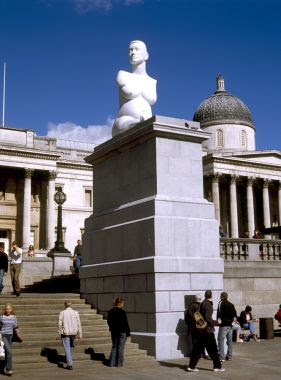+in+Trafalgar+Square.jpg)
It was part of his series "The Complete Marbles", eleven life-size portrait sculptures of men and women who were born with physical disabilities or have had limbs amputated due to accidents or illness.
Quinn had previously made several sculptures using fragments cast from his own body, as in The Etymology of Morphology 1996 (T07239), or his body deformed through sculptural process in No Visible Means of Escape IV 1996 (T07238), before he was inspired to work with actual physical deformity.
Looking at fragmented classical sculptures in the British Museum, he wondered how viewers would respond to bodies that had been damaged during their lifetime rather than after being transformed into objects through artistic representation. He explained:
"It’s about the difference between art and life. Also about inside and outside and how people impute an inside to someone from a reading of their outside ... Traditionally marble is the medium of cultural and social acceptance and celebration ...the marble is used ironically and non-ironically at the same time. The sitters are heroes who have conquered their own interior worlds, and yet disabled people are invisible culturally, in art history. I wanted to celebrate them and use the medium in its original way as well."
(Quoted in Marc Quinn, p.60.)
Quinn contacted sporting associations in order to find disabled people with bodies that were well developed and maintained. He cast each person in plaster before Italian craftsmen copied the casts in the whitest possible marble, selected to represent a kind of Platonic perfection. He commented: ‘this marble, which comes from Macedonia, is like the idea of marble. It’s even bad taste, beautiful in a way that’s almost nauseating ... I wanted it to be absolutely clean, to be super real, hyper-real.’ (Quoted in Marc Quinn 2002, [p.39].) The subjects are depicted in semi-heroic attitudes, the result of a compromise between the model’s need for comfort and the artist’s requirement for a dynamic, positive pose that would highlight the strength of the character portrayed.
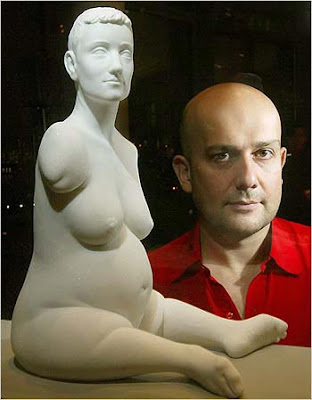 Alison Lapper (eight months pregnant) with the artist
Alison Lapper (eight months pregnant) with the artist Alison Lapper and her son Parys
Alison Lapper and her son Parys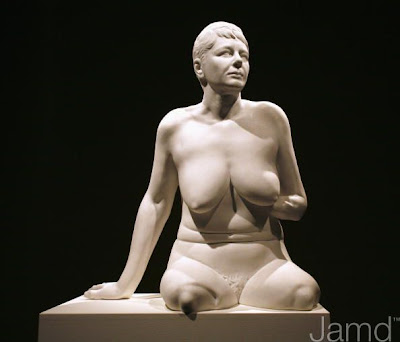 Alexandra Westmoquette
Alexandra Westmoquette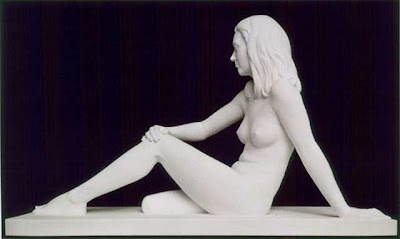 Selma Mustajbasic
Selma Mustajbasic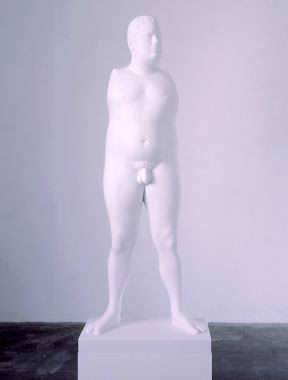 Tom Yendell
Tom Yendell Stuart Penn
Stuart Penn Peter Hull
Peter Hull Jamie Gillespie
Jamie Gillespie The Kiss
The KissAlthough Quinn have been accused of exploitation ('Making money, making art, on peoples' misfortunes') or critisized as kitch (as many postmodern artworks that are kitch indeed) and insufferable idealism, "The Complete Marbles" can be considered a seminal and prominent work of art that implement disability asthetics.
Read more: Tate,Telegraph,the complete marbles,Marc Quinn and Figurative Sculpture
No comments:
Post a Comment